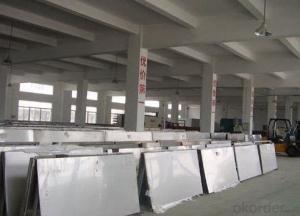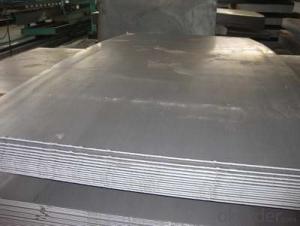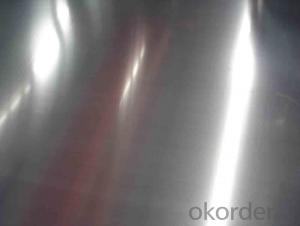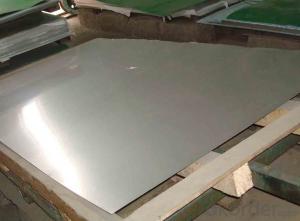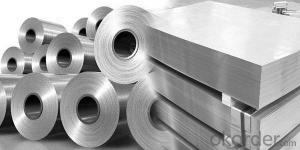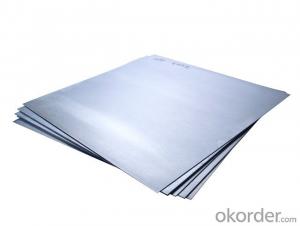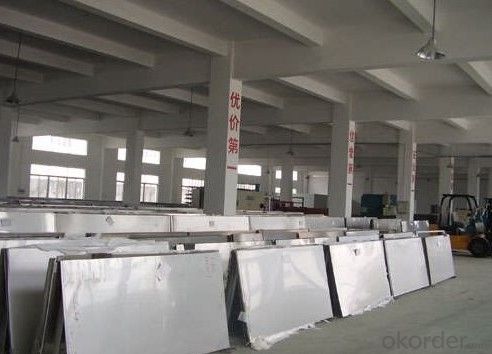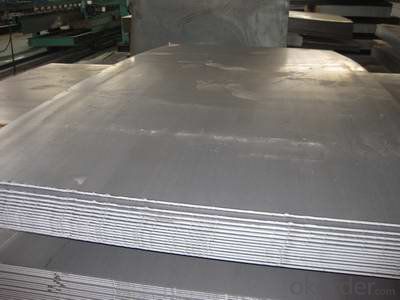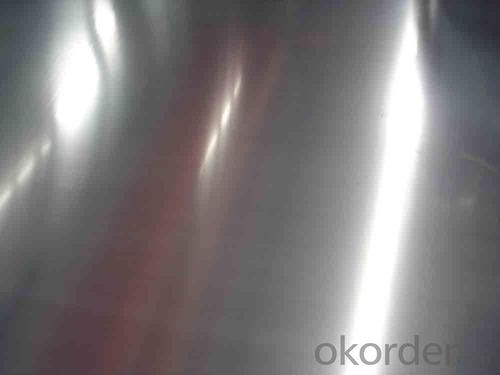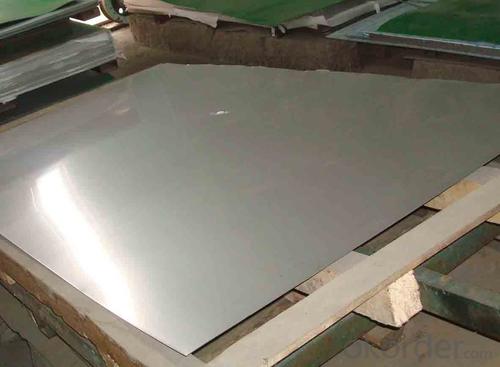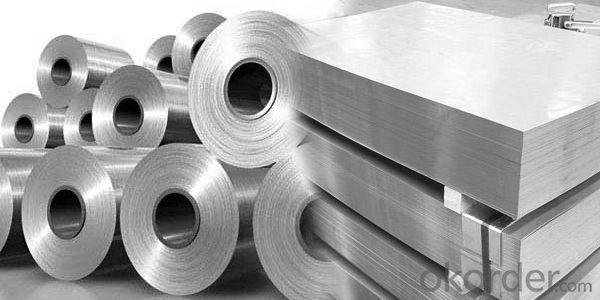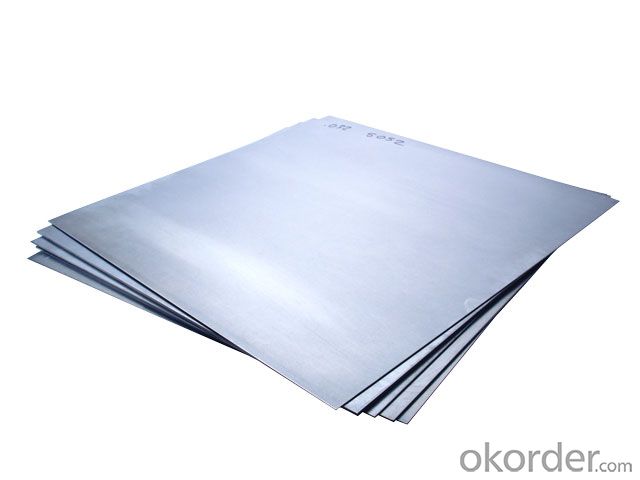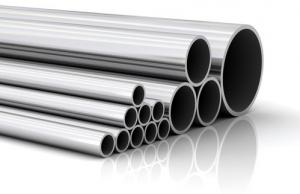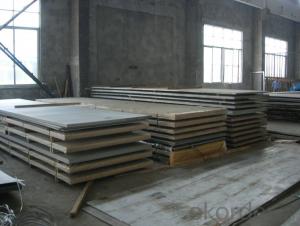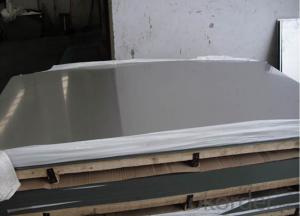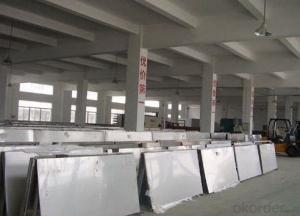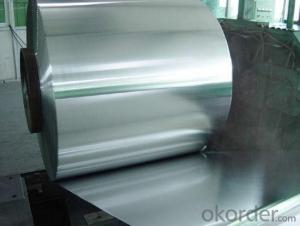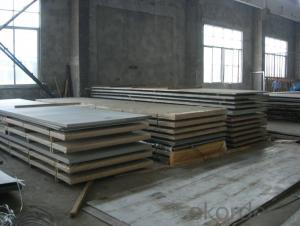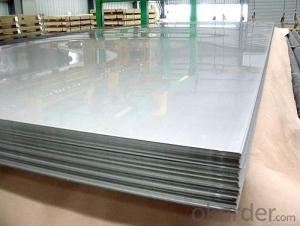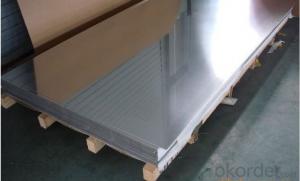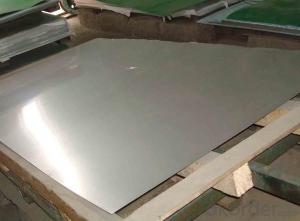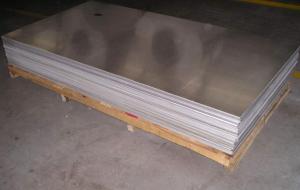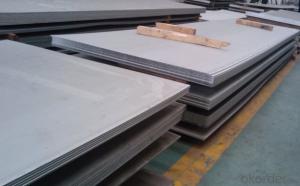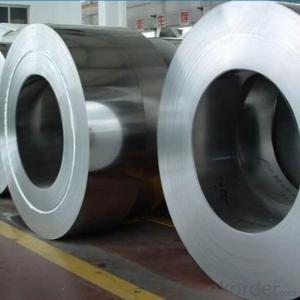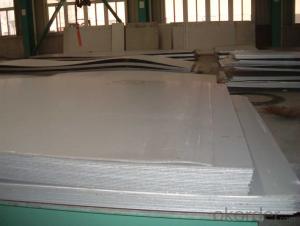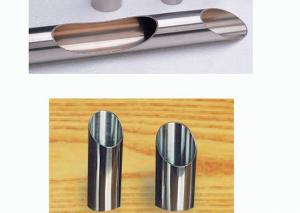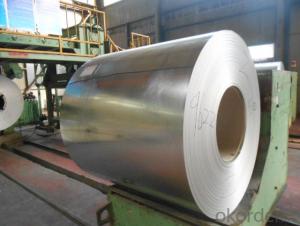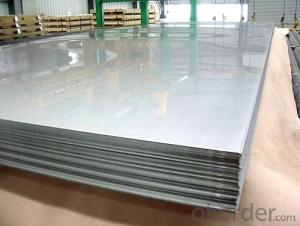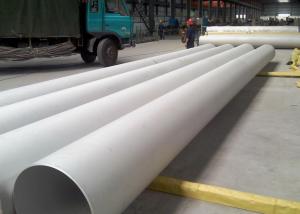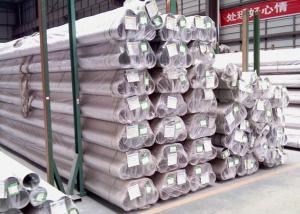Stainless Steel Plate 202 with No.4 Surface Treatment
- Loading Port:
- Shanghai
- Payment Terms:
- TT OR LC
- Min Order Qty:
- 500 m.t.
- Supply Capability:
- 5000000 m.t./month
OKorder Service Pledge
OKorder Financial Service
You Might Also Like
Hot sale stainless steel sheet 201/202/304/304l/316/316l/430
Description of Stainless Steel Sheet:
Description | steel sheet,hot rolled steel sheet,cold rolled steel sheet, steel sheet,sheet,steel plate |
Standard | ASME, ASTM, EN ,BS,GB,DIN, JIS etc |
Application | Steel sheet applies to construction field, ships building industry, petroleum & chemical industries, war and electricity industries, food processing and medical industry, boiler heat exchanger, machinery and hardware fields. |
Packaging | Standard export sea-worthy packing |
Delivery time | 10-30 days |
Quality | No.1 |
Productivity | 500 tons/Day |
Note | Our company has cooperative relation between the domestic agents. Stainless steel sheet can be made accordingto the customers requirements. Fasten delivery. Quality assured. |
Contacts | If you have any question,please feel free contact me. |
Stainless steel sheet surface finish characteristics
Surface finish | Characteristics and application |
2B | The surface brightness and flatness of no2B is better than no2D. then through a special surface treatment to improve its mechanical properties,No2B could nearly satisfy comprehensive uses. |
No.1 | Polished with abrasive belt of grit#100-#200, have better brightness with discontinuous coarse stria, used as inner and external ornaments for building, electrical appliances and kitchen utensils etc. |
No.4 | Polished with abrasive belt of grit #150-#180,have better brightness with discontinuous coarse stria, but thinner than No3, are used as bathtub buildings inner and external ornaments electrical appliances kitchen utensils and food processing equipment etc. |
HL | Polished with abrasive belt of grit #150-#320 on the NO.4 finish and has continuous streaks, mainly used as buildings ornaments elevators, door of building, frontal plate etc. |
BA | Cold rolled, bright annealed and skin-passed, the product have excellent brightness and good reflexivity like mirror, kitchen apparatus, ornament etc. |
8K | The product have excellent brightness and prefer reflexivity can to be the mirror. |
Main Features of stainless steel sheet :
•Escalator, Elevator, Doors
•Furniture
•Production tools, Kitchen appliances, freezers, cold rooms
•Auto Parts
•Machinery and Packaging
•Equipment and Medical devices
•Transport system
Product Details:
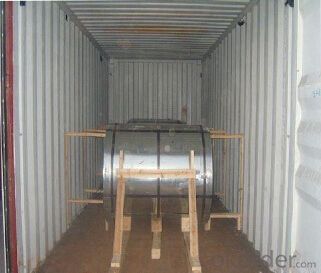
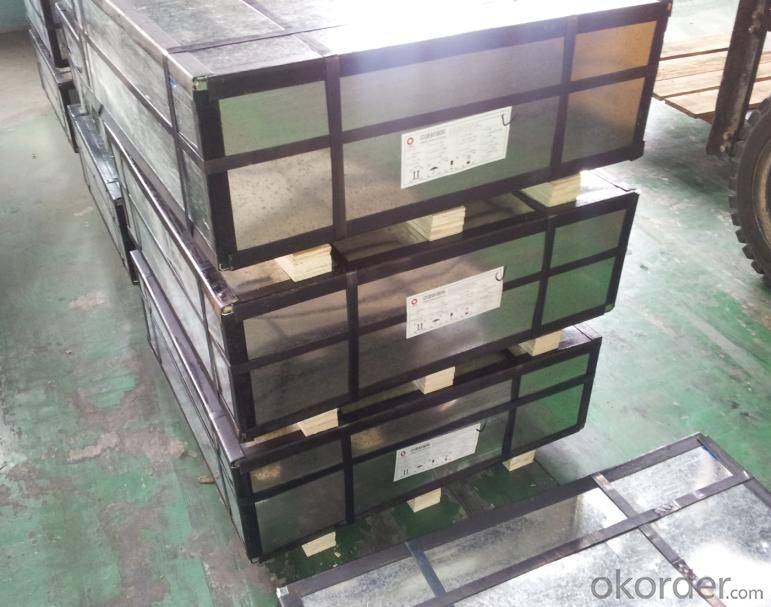
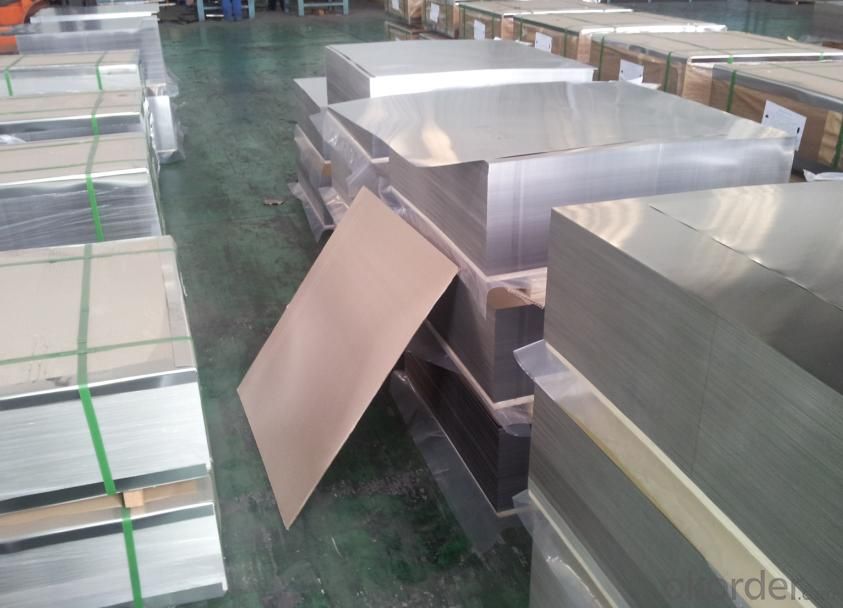
Sandard Seaworth Packing(wooden packing with water proof paper)
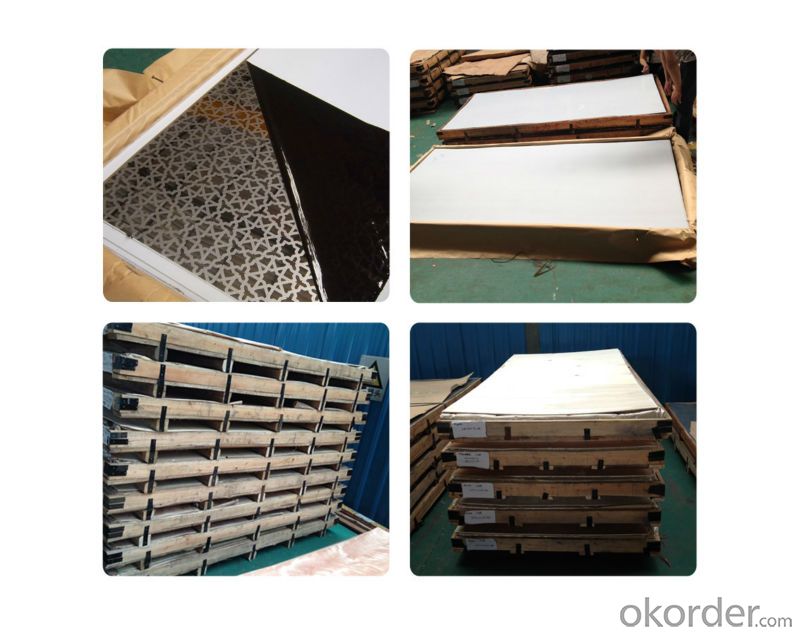
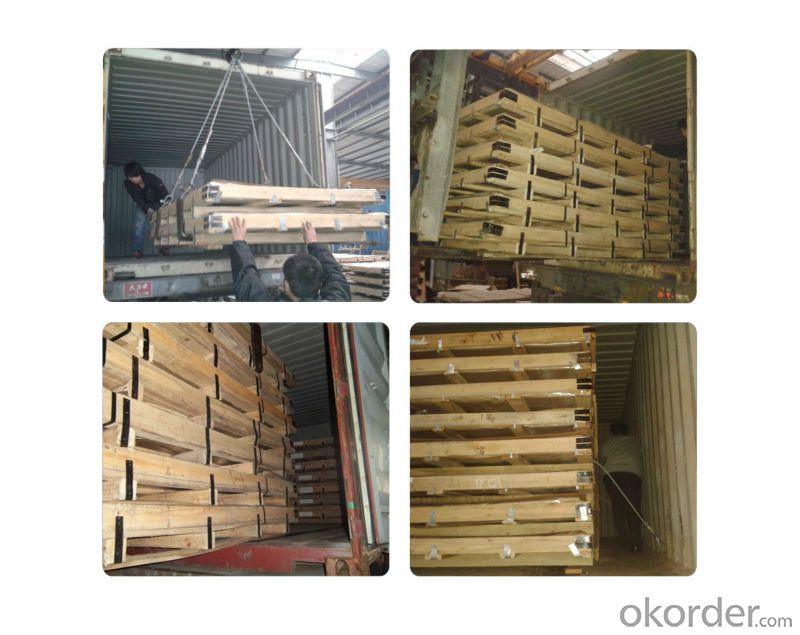
FAQ:
1. What's the quality?
very fine
2. How long get reply?
within 24 hours
If you have any question about stainless steel sheets,donot forget to sending the email to Us! You will get the competitive Price and have a very good experience about the Buying Process! CNBM International Corporation is always your trustful friend!
- Q: Can stainless steel sheets be used for decorative room dividers or partitions?
- Yes, stainless steel sheets can definitely be used for decorative room dividers or partitions. Stainless steel is a versatile material that offers a sleek and modern look, making it a popular choice for contemporary interior designs. Its durability and resistance to corrosion also make it suitable for long-term use in various settings, including homes, offices, or commercial spaces. Additionally, stainless steel sheets can be customized with different finishes, patterns, or perforations to enhance their decorative appeal and create unique room dividers or partitions.
- Q: Can stainless steel sheets be used for insulation?
- Stainless steel sheets are not typically used as insulation materials. While stainless steel has excellent heat resistance and is commonly used in various applications due to its durability and corrosion resistance, it does not possess good insulation properties. Insulation materials are designed to minimize heat transfer by reducing conduction, convection, and radiation. They typically have low thermal conductivity, which means they are effective in preventing heat transfer. Stainless steel, on the other hand, has high thermal conductivity, meaning it can conduct heat easily. To achieve insulation, it is more common to use materials such as fiberglass, mineral wool, foam boards, or reflective barriers. These materials have lower thermal conductivity and can effectively trap air or create a barrier that restricts the transfer of heat. By comparison, stainless steel sheets would not provide the same level of insulation as these specialized materials. However, stainless steel sheets can still be used in construction or industrial settings for their other properties, such as strength, corrosion resistance, and aesthetic appeal.
- Q: What are the different finishes available for stainless steel sheets?
- There are several different finishes available for stainless steel sheets, each offering a unique look and level of protection. 1. No. 1 Finish: This is the most common and basic finish for stainless steel sheets. It is a hot-rolled finish that appears dull and rough, with visible grain lines. It is typically used for industrial applications where appearance is not a major concern. 2. No. 2B Finish: This is a bright, cold-rolled finish that is slightly reflective. It has a smooth surface with a matte finish and is commonly used for decorative purposes, such as in architectural applications or for kitchen appliances. 3. No. 4 Finish: Also known as brushed or satin finish, it has a fine polishing grit line that creates a distinctive look. This finish is often used for decorative applications, such as for elevator doors or trim, and can hide minor surface imperfections. 4. No. 8 Mirror Finish: This is the most reflective finish available for stainless steel sheets. It has a highly polished, mirror-like surface that is smooth and shiny. This finish is often used for decorative purposes, such as in architectural features or decorative trim. 5. Hairline Finish: This finish features a very fine, brushed texture that is similar to the grain of hair. It provides a subtle, elegant appearance and is commonly used for decorative and architectural applications. 6. Embossed Finish: This finish involves creating a pattern or design on the surface of the stainless steel sheet through embossing or stamping. It adds texture and visual interest to the sheet and is often used for decorative purposes. It is important to note that the availability of these finishes may vary depending on the supplier and the specific stainless steel grade being used.
- Q: Can stainless steel sheets be used for kitchen sinks?
- Yes, stainless steel sheets can be used for kitchen sinks. Stainless steel is a popular material choice for kitchen sinks due to its durability, corrosion resistance, and easy maintenance. Stainless steel sheets are commonly used to fabricate kitchen sinks as they can be molded into various shapes and sizes. The smooth surface of stainless steel also makes it easier to clean and maintain hygiene in the kitchen. Additionally, stainless steel sheets are resistant to heat, stains, and scratches, making them a practical choice for a kitchen sink that is exposed to daily use and potential wear and tear.
- Q: Are stainless steel sheets resistant to scaling?
- Yes, stainless steel sheets are highly resistant to scaling. Due to their chromium content, they form a protective layer that prevents oxidation and scaling even at high temperatures.
- Q: Can stainless steel sheets be used in the aerospace industry?
- Certainly, the aerospace industry can indeed employ stainless steel sheets. With its exceptional mechanical properties, corrosion resistance, and high strength-to-weight ratio, stainless steel is an incredibly versatile material. Hence, it finds great applicability in numerous aerospace uses. For instance, it is frequently utilized in fabricating aircraft elements like engine parts, structural frames, fuel tanks, and exhaust systems. Moreover, stainless steel sheets are also employed in manufacturing aerospace fittings, fasteners, and even interior cabin components. Thanks to its outstanding durability and ability to withstand extreme environments and temperature variations, stainless steel remains a dependable choice for the aerospace industry.
- Q: Can stainless steel sheets be used for marine propellers?
- Yes, stainless steel sheets can be used for marine propellers. Stainless steel is known for its corrosion resistance and durability, making it suitable for marine applications. Its strength and resistance to saltwater corrosion make it a popular choice for manufacturing marine propellers.
- Q: How do you prevent staining on stainless steel sheets?
- To prevent staining on stainless steel sheets, it is important to regularly clean and maintain them. This can be done by using non-abrasive cleaners specifically designed for stainless steel, avoiding harsh chemicals and abrasive materials that can scratch the surface. Additionally, wiping away spills or moisture promptly and drying the sheets thoroughly after cleaning can help prevent staining. Using protective coatings or sealants specifically made for stainless steel can also offer an extra layer of protection against staining.
- Q: What is the maximum length available for stainless steel sheets?
- The maximum length for stainless steel sheets can differ based on the supplier and the grade of stainless steel in question. Typically, stainless steel sheets can be found in lengths that span from 96 inches (8 feet) to 240 inches (20 feet). In certain circumstances or upon request, suppliers may provide even lengthier sheets, reaching up to 300 inches (25 feet) for particular applications. To ascertain the maximum length available for the specific stainless steel sheet you need, it is crucial to consult with the supplier.
- Q: How do you calculate the bending radius for stainless steel sheets?
- In order to determine the bending radius for stainless steel sheets, several factors need to be taken into consideration. To begin with, the thickness of the stainless steel sheet must be determined. Thinner sheets necessitate smaller bending radii, whereas thicker sheets can accommodate larger radii. The type of stainless steel being used should also be identified. Various grades of stainless steel possess different levels of ductility, which impacts their ability to be bent. Higher ductility allows for smaller bending radii. Furthermore, the desired angle of the bend should be considered. The sharper the angle, the smaller the bending radius required. To calculate the bending radius, the following formula can be utilized: Bending Radius = (2 x Sheet Thickness) + (Bend Angle x Sheet Thickness) For instance, if a stainless steel sheet has a thickness of 0.5mm and a 90-degree bend is desired, the bending radius would be: Bending Radius = (2 x 0.5mm) + (90 x 0.5mm) = 1mm + 45mm = 46mm It is essential to note that this formula serves as a general guideline and may vary depending on the specific properties of the stainless steel being used. Consulting technical specifications or manufacturers' guidelines is always recommended for accurate bending radius calculations.
Send your message to us
Stainless Steel Plate 202 with No.4 Surface Treatment
- Loading Port:
- Shanghai
- Payment Terms:
- TT OR LC
- Min Order Qty:
- 500 m.t.
- Supply Capability:
- 5000000 m.t./month
OKorder Service Pledge
OKorder Financial Service
Similar products
Hot products
Hot Searches
Related keywords
